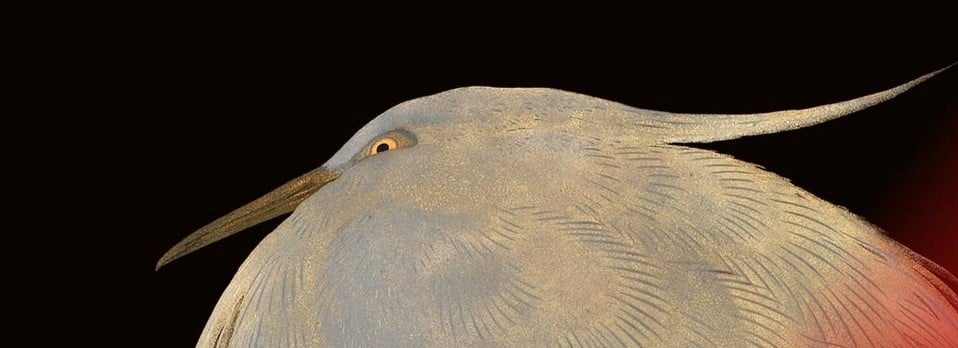
Pair of cabinets
1680-90Wood, lacquer, gilt bronze | 77.3 x 93.5 x 54.2 cm (whole object) | RCIN 21627
A pair of lacquer cabinets on gilt stands. A pair of doors each with five shaped lacquer panels and seven incised glit clasp hinges, loop carrying handles to the sides. The gilt lacquer panels are on a black ground and are decorated with birds, insects and animals. Interior with ten drawers, gilt metal quarter mounts at the corners. The carved and gilded stand has square in section legs and paw feet supported by four stretchers with an acorn at the centre.
By 1660, the VOC tended to order Japanese lacquer cabinets in pairs. This cabinet is one of two decorated with mirror images of an almost identical design. The fan-shaped panels on the front of the doors are decorated in high-relief gold lacquer (takamakie) with dragonflies, butterflies, grasshoppers, geese, peacocks, nightingales, deer, cockerels, bamboo, chrysanthemums and bellflowers. One of the scenes depicts two lions: a larger one on land and a smaller cub in the water. This motif refers to a Chinese legend in which a lioness tosses her cubs off a bridge at Mount Tiantai to test their strength in the water. Further flowers on the inside of the cabinet possibly refer to the ‘Ten Friends of the Literati’, representing the Japanese love of cultivating and discussing flowers. To the European collector, however, these scenes probably merely represented the exotic landscape of a far-off land.
The cabinets were first recorded in the Royal Collection in 1818, in a watercolour of the Second Drawing Room at Buckingham House. Following the transformation of the house into a palace from the late 1820s, the cabinets were moved to Jeffrey Wyatville’s newly built Grand Corridor at Windsor Castle. This became the principal space in the castle for the display of great works of art. George IV’s arrangement there included 16 cabinets and chests decorated with lacquer.
In 1829, George IV’s principal furniture suppliers, Morel & Seddon, gilded, restored, re-japanned and polished five ‘Indian’ cabinets at the castle. This cabinet was probably among them. Morel & Seddon were paid for ‘rejapanning [sic] them in a very superior style with landscapes & other devises’. Such changes are evident in the lions and a landscape scene on rcin 21627.1. Two large mountains in the middle must have been added at a later date to cover up a large crack down the front of the cabinet door.
Text adapted from Japan: Courts and Culture (2020)






